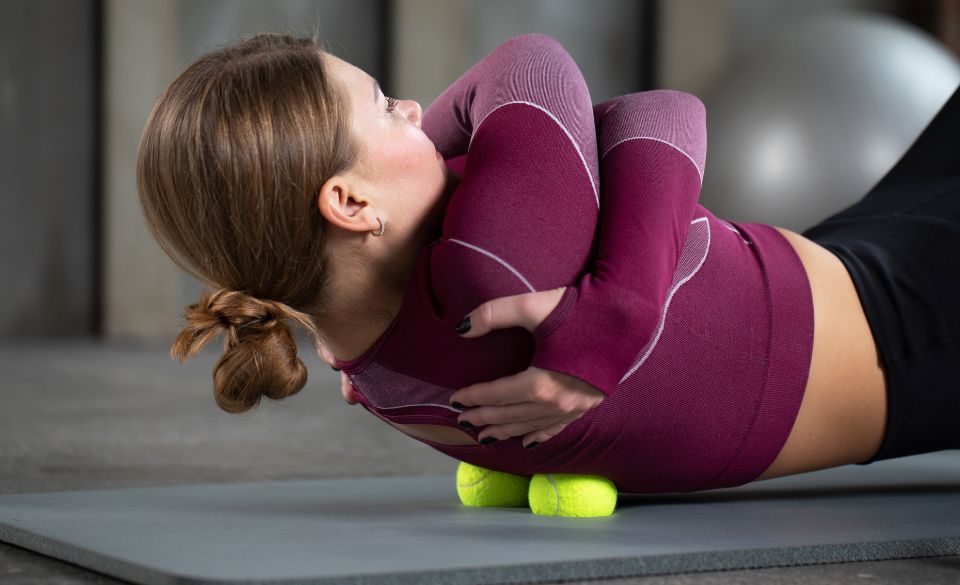
Top 6 Back Mobility Exercises for Runners
Page Contents
As runners, we often focus on strengthening our legs and improving cardiovascular endurance, but it’s crucial not to overlook the importance of back mobility. A strong and mobile back can enhance your running form, reduce the risk of injury, and improve overall performance. In this blog post, we’ll explore some effective back mobility exercises specifically designed for runners. So, get ready to loosen up those muscles and unleash your full running potential!
The Importance of Back Mobility for Runners
The importance of back mobility for runners cannot be overstated. It’s like the secret ingredient that takes your running to the next level. When your back is mobile and flexible, it acts as a strong and stable foundation for the rest of your body. It allows for proper alignment, reducing the risk of compensatory movements or poor form that can lead to injuries.
Think of your back as the conductor in an orchestra. It orchestrates the movements of your arms, legs, and core, ensuring they work in harmony. When your back is mobile, it optimizes the distribution of forces as you run, minimizing stress on vulnerable areas such as the knees, hips, and ankles. It’s like having a superhero cape that protects you from unnecessary strain and pain.
But it’s not just about injury prevention. Back mobility also enhances your running performance. A mobile back enables you to achieve a full range of motion, allowing for a longer stride, improved cadence, and greater power generation. It helps you tap into your body’s natural potential and unleash your inner gazelle.
Not only does back mobility positively impact your physical performance, but it also contributes to your overall well-being as a runner. When your back is free from tightness and restrictions, it promotes a sense of lightness and freedom in your movement. It enhances your body awareness, making it easier to detect and correct any imbalances or inefficient patterns. Plus, running with a mobile back simply feels good – it’s like dancing through the miles with a smile on your face.
So, how do you ensure optimal back mobility? Incorporating regular exercises and stretches specifically targeting the back can do wonders. By dedicating a few minutes to movements like the Cat-Camel stretch, Thread the Needle, and Bridge Pose, you’re nurturing your back’s flexibility and strength. These exercises not only improve your running form but also cultivate a deeper connection with your body.
Cat-Camel Stretch
The Cat-Camel stretch is an excellent exercise to improve spinal mobility and flexibility. Start on your hands and knees, with your back in a neutral position. Begin by rounding your back upwards, dropping your head and tailbone down towards the ground, like a cat stretching. Hold this position for a few seconds, then slowly reverse the movement, arching your back and lifting your head and tailbone upwards, like a camel. Repeat this back-and-forth motion for 8-10 repetitions, focusing on the full range of motion and controlled movement.
Thread the Needle
The Thread the Needle exercise targets the rotational mobility of the thoracic spine, which is important for maintaining proper running form and preventing excessive strain on the lower back. Start in a tabletop position with your hands and knees on the ground. Reach your right arm under your left arm, threading it through the space between your left arm and left knee. Allow your right shoulder and side of the head to rest on the ground. Hold this position for a few seconds, feeling a gentle stretch in your upper back and shoulder. Return to the starting position and repeat on the other side. Perform 8-10 repetitions on each side, focusing on controlled movement and deep breathing.
Bridge Pose
The Bridge Pose is a fantastic exercise to improve both back mobility and glute strength, which are essential for efficient running mechanics. Lie on your back with your knees bent and feet flat on the ground, hip-width apart. Place your arms by your sides. Press through your feet and lift your hips off the ground, engaging your glutes and maintaining a straight line from your knees to your shoulders. Hold this position for a few seconds, focusing on the activation of your back and glute muscles. Slowly lower your hips back down to the ground. Repeat this movement for 8-10 repetitions, emphasizing the control and engagement of the back muscles.
Child’s Pose with Rotation
Child’s Pose with Rotation is a fantastic exercise that targets the thoracic spine, promoting rotational mobility and opening up the chest. Start in a kneeling position and then sit back on your heels with your knees slightly wider than hip-width apart. Extend your arms forward and lower your torso toward the ground, resting your forehead on the mat. From this position, slowly reach your right hand across to the left side, rotating your upper body and feeling a stretch in your mid-back. Hold for a few seconds, then return to the center. Repeat on the opposite side, reaching your left hand across to the right. Perform 8-10 repetitions on each side, focusing on the rotation and maintaining a relaxed and steady breath.
Standing Side Bend
The Standing Side Bend exercise helps improve lateral mobility in the spine, targeting the oblique muscles and the muscles along the sides of the back. Stand with your feet hip-width apart, maintaining a tall posture. Place your right hand on your hip and extend your left arm overhead, reaching toward the right side. Gently lean your upper body to the right, feeling a stretch along the left side of your back. Hold for a few seconds, then return to the starting position. Repeat on the opposite side, placing your left hand on your hip and reaching your right arm overhead. Perform 8-10 repetitions on each side, focusing on maintaining proper alignment and feeling a gentle stretch.
Sphinx Pose
The Sphinx Pose is a wonderful exercise for targeting the mobility of the lower back and strengthening the muscles along the spine. Lie face down on the mat, resting on your forearms with your elbows directly beneath your shoulders. Press your forearms into the mat and lift your chest off the ground, arching your back gently. Keep your pelvis in contact with the mat and engage your core to support your lower back. Hold this position for 10-15 seconds, focusing on the extension of the spine. Gradually increase the duration of the hold as your back becomes more flexible and comfortable in the pose. Repeat for 8-10 repetitions, allowing your breath to guide the movement.
How Often Should You Do Back Mobility Exercises
When it comes to back mobility exercises, consistency is key. Incorporating them into your regular fitness routine can yield the most significant benefits for your back health and overall running performance. The frequency at which you should do back mobility exercises may vary depending on individual factors such as fitness level, flexibility, and any specific needs or limitations. However, as a general guideline, aim to perform back mobility exercises at least 2-3 times per week.
By including back mobility exercises in your routine multiple times a week, you give your body ample opportunity to improve and maintain flexibility and mobility. Consistency helps reinforce proper movement patterns, address any imbalances, and gradually increase your range of motion over time.
It’s also important to listen to your body and adapt the frequency based on how you feel. If you have a specific condition or injury, it’s advisable to consult with a healthcare professional or a qualified fitness expert who can provide personalized guidance on the frequency and intensity of back mobility exercises.
Remember that quality matters just as much as quantity. It’s better to perform a few well-executed back mobility exercises with proper form and focus rather than rushing through a large number of repetitions. Take your time, breathe deeply, and engage your muscles mindfully during each exercise. This approach will help you derive the most benefits and minimize the risk of injury.
In addition to dedicated back mobility sessions, consider incorporating dynamic warm-up exercises and stretches before each running session. These can help prepare your back and the rest of your body for the demands of running and improve overall mobility. Simple movements such as gentle twists, shoulder rolls, and arm swings can help activate and loosen up the muscles in your back.
To summarize, aim to perform back mobility exercises 2-3 times per week, ensuring you maintain proper form and focus during each session. Additionally, incorporate dynamic warm-up exercises before your runs to further enhance back mobility and reduce the risk of injury. By making back mobility exercises a consistent part of your routine, you’ll reap the rewards of a strong, flexible back that supports your running endeavors.
Final Words
Back mobility exercises are a crucial component of a well-rounded running routine. They promote efficient movement, reduce the risk of injury, and improve overall running performance. Incorporating exercises like the Cat-Camel stretch, Thread the Needle, and Bridge Pose can help you maintain a flexible and strong back, allowing you to run with ease and comfort. Remember to warm up before performing these exercises and listen to your body, adjusting the intensity and range of motion based on your individual needs and abilities. So, add these back mobility exercises to your running arsenal and experience the benefits of a supple and mobile back on your next run!




